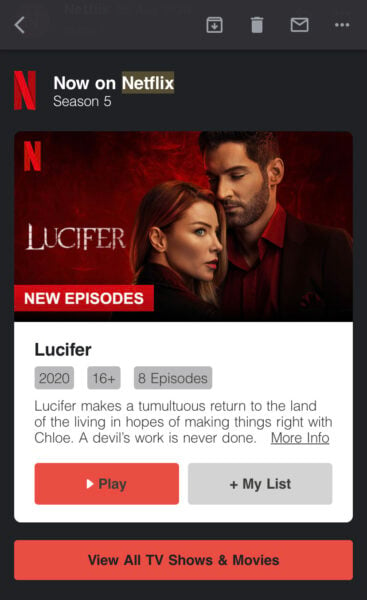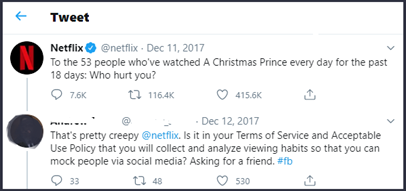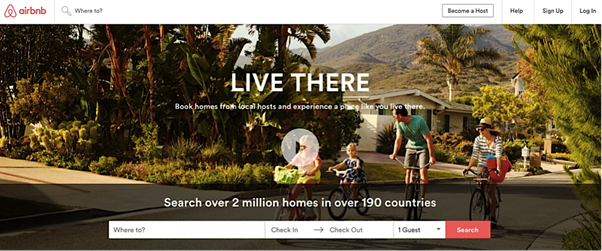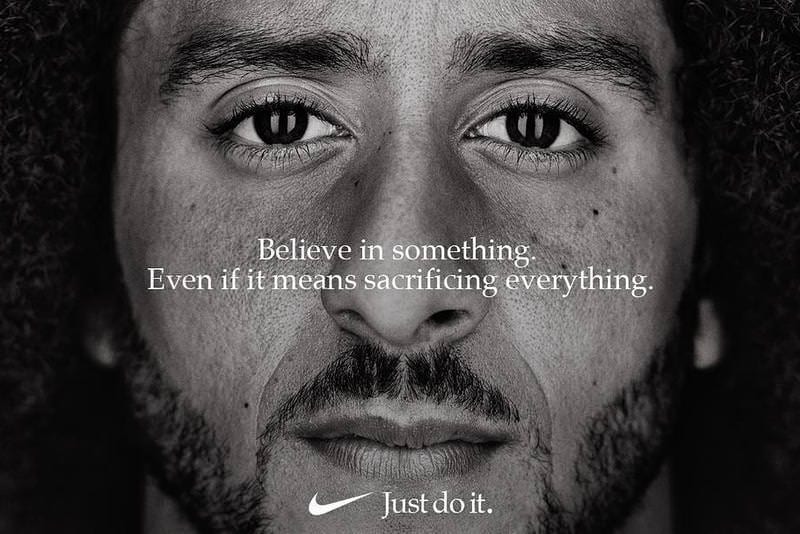A digital marketing strategy involves using a variety of channels to achieve your business goals.
Social media, website adverts, emails, and more combine together to develop your brand's standing. But the channels you use, the content you produce, and the messaging you develop determine its success. So, how do you grow your business with digital marketing?

Maybe your digital strategy becomes so successful you scrap your SaaS business and become a full-time meme maker. You gain 1M followers overnight. One day you're tweeting about software, the next you're adding a witty caption to a picture of Keanu Reeves. That escalated quickly.
Okay, it probably won't be like this. Digital marketing strategy is a hard graft sometimes. But it doesn't have to be so difficult. By understanding the successes of giants in the space, businesses can develop their own specific pathways. So, to figure out the top b2b digital marketing trends, we can take inspiration from B2C business use cases. Nice one.
And it's good news for the digital marketing industry in 2022. In fact, 63% of businesses have increased their digital marketing budgets in just the past year. That's not surprising, considering 55% of all marketing is now digital, with total digital advertising spend in 2021 reaching $436B versus offline advertising's $196B.
But you might've heard a few terms being thrown around. It's easy to get lost on your digital strategy roadmap. So, we're here to help. Two things that often get confused are digital marketing strategy and digital marketing campaigns. What's the difference?
Digital Marketing Strategy. This is the plan that is implemented to maintain and grow your business. This can include market analysis, marketing approach, and brand awareness. and the establishment of your KPIs. This will also include some key social media features and techniques, such as SEO, video production, and social media marketing.
Digital Marketing Campaigns. These are a smaller, more focused set of activities to promote a specific campaign, such as a product or service. They often include short time frames, a choice of marketing channels, budgets, and objectives, and require strong visual and engagement mechanisms.
So, what's a simple way to start using digital marketing? Well, you can take 9 steps to digital marketing success:
- Define your brand. This means deciding how it'll come across in your online campaigns, through your brand voice, USPs, and value propositions.
- Build your buyer personas. Who do you want to reach? What are their motivations?
- Establish your goals. This is where you can consider both your goals and what channel these goals need. For example, if you want to generate brand awareness, you might start a podcast or a YouTube Channel.
- Choose your digital marketing strategy. Right, you've already started this in the step above. Now it's time to properly pick the best strategies for your business. Go for sustainable and specific to your business, over the shiny trendy strategies
- Set your digital marketing budget. Be realistic!
- Brainstorm your strategy. Planning is key, if you're advertising, start determining your ad spend and build your content calendar.
- Plan how you can execute this all quickly. Don't slow down production by making everything perfect. This will sacrifice your growth. Ideally, your marketing campaigns shouldn't take more than a week to execute.
- Launch your campaigns. Now, you're ready to go. Launch your campaigns across all channels, and feature the appropriate tracking information.
- Track your results. See what works and what doesn't. Keep a pulse on your strategies and their ROI. Don't be afraid to abandon strategies that don't work.
Right, now let's take a look at the top brands running stellar digital marketing campaigns, starting with:
1. Netflix
You knew this was coming. Netflix is always ahead of the game when it comes to its marketing strategies, as well as having the ability to keep a finger on the pulse of all things pop culture. Though the company has recently lost a number of subscribers, due to increasing competition and an apparent reduction in content quality.
But if we consider what made them great in the first place, and solidified them as a household name, it all comes down to their personalisation. Specifically their personalisation marketing. I mean, it's not "Amazon Prime TV and Chill" for a reason.
91% of consumers suggest they're more willing to engage with businesses that provide personalised offers directly to them. So, Netflix does just that and doesn't pressure its customers too much either.
They don't bombard subscribers with suggestions, either. It knows that online consumers are more likely to respond to a highly personalised, relatable, and interactive email rather than a bunch of non-specific content.

These emails, and push notifications, are easy to ready with a clear call-to-action. Netflix customers will receive an email that recommends a film based on their previous choices, using their first name to address them.
So customers are getting personalised recommendations, and then an immediate lead, plus Netflix gets to make better suggestions for what a client might choose in the future. Win-win. Win.
Netflix also does a bunch of split tests. Up to a couple hundred a year in fact. It'll randomly select 300,000 users, and tests everything from images, to font size.
But that doesn't mean Netflix doesn't make mistakes. Sometimes personalisation goes a little bit too far. Even a little creepy. All for the risk of an advertising campaign.
Every user of the company knows they use a bunch of data to power the algorithm. It's in exchange for an effective user experience. If you watch "Love is Blind" every day, you'll want recommendations for whatever sun-soaked romantic reality competition show comes next. But they've put out some communications which have creeped out some of its loyal customers.

2. Airbnb
Another game-changer here. Airbnb has shifted the way the travel industry is run, and currently boasts a total value of $93.01B, 4M hosts, 6M global listings, and 19% of the total demand for lodging in the U.S.
Their marketing strategy is aimed at getting active hosts and travellers onto the platform, not one or the other. Its digital marketing relies heavily on user-generated content, on social platforms and on the Airbnb platform itself. They also provide how-to videos and posts geared towards owners and popular city guides.
Their tone of voice on Instagram uses lightness and humour, combined with compelling images of different travel locations around the world. Often, these images are provided by users.

This makes the company, and its social platforms, way more than a booking site. Instead, it acts as a travel forum too, providing recommendations and inspiration for the user's next trip.
With 90% of consumers saying user-generated content influences their decisions, more than promo emails and search engine results, USG is impossible to ignore.
User-generated content has become a very important part of a modern marketing strategy. In an era where trust is king, consumers are turning to friends and family (or at least influencers who act like their friends and family) to see where they should spend their hard-earned dollars.
Airbnb has also turned to influencers in their digital marketing campaigns. Just like us ordinary folks, influencers and celebrities also use the platform of their own accord. For example, Mariah Carey has previously put up a post on her Instagram, when she was visiting an Airbnb property, which got 45,000 likes. All without a single penny spent by Airbnb.
She was the first celebrity who promoted their company, and many others followed. So, when Airbnb wanted to announce their 60,000 new dog-friendly properties, they turned to a popular dog influencer on Instagram with over 1.3M followers, which was very well received by Instagram users.

3. Nike
Nike has used a bunch of digital marketing platforms and strategies over the years, often in a highly creative and successful way. This has ranged from newsletters to blogs, to social media.
The footwear brand has even partnered with Facebook's Messenger chatbot platform Snaps. The chatbot kept all the followers of the company updated with the new campaign through Facebook Messenger. This specific digital strategy produced open rates of 86%.
The company's success is linked to its storytelling. Gone is the era when a marketing strategy was linked only to the characteristics of the product. Now, brands have to sell a story - and Nike does just that.
Nike has moved from object-focused ads to ones which create a story, pushing inspiration feelings and aspirational narratives.

The company also uses a concept they call "used customer channels". This means it identifies where platforms their customer base lives. For example, they found their target audience was more likely to use YouTube over traditional TV. So, they began a strategy to increase the broadcasting of adverts on the platform, reaching their target audience in a specific way. This reduces costs and increases audience gain.
This mentality has also increased the brand's interest in the metaverse.
The sportswear giant has filed seven trademark applications for virtual clothing, including trainers. This is a step up from the Nike-branded items they've introduced to Fortnite and Roblox.
The trademarks were submitted to the US Patent and Trademark Office for use on “downloadable virtual goods, namely, computer programs featuring footwear, clothing, headwear, eyewear, bags, sport bags, backpacks, sports equipment, art, toys and accessories for use online and in online virtual worlds”.
“Nike is protecting their trademarks for this new era,” said Josh Gerben, a trademark attorney
Nike is also joining tech giants like Apple on a hiring spree. They're looking to fill positions for a 'Virtual material designer of footwear', and other virtual design roles.
“They’re filing new applications for the company’s main trademarks, saying that they’re going to launch and start selling virtual clothing, headwear, shoes, in online and virtual worlds," continued Gerben.
Right-o. Now we've seen the successes, what current marketing trends can you begin to implement into your strategy? Well, you might want to try some of the following:
- Social networking. These sites will grant you access to an increasingly wide audience.
- Paid social adverts. These will provide an overview of your service and can have a pretty wide reach for a small amount of money.
- Newsletters and emails. This strategy can help you gain and keep customers. With informative and entertaining copy, you can keep customers up-to-date with all your latest campaigns.
- Microblogging sites. These sites can be used to increase product interaction with a large audience. It provides direct communication between your brand and your customers, platforming your products, providing a good customer experience, and even responding to customer feedback.
- Video marketing. Video is a highly effective method of digital marketing. “Video is the most powerful communication tool available to the modern seller. Any salesperson not leveraging video is missing an opportunity to communicate effectively with their prospects and customers," says Eric S. Yuan Founder, CEO of Zoom. Make sure you include an appropriate title tag, transcript, and SEO exposure.
- Graphics and great visuals.
- Search engine optimisation or SEO. This'll play an essential part in all aspects of your digital marketing.
- Blog posts. This can be from someone within your company, contributing writers, or even customers.
